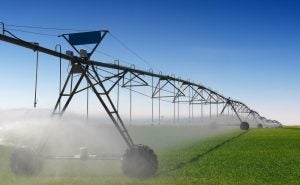In 2023, the Kansas Legislature allocated $35 million to preserve the Ogallala Aquifer, marking the largest investment in the state’s water resources to date. This appropriation, supported by agricultural groups like the Kansas Farm Bureau, far exceeds the previous annual funding goal of $8 million, which was often unmet.
Kansas hopes to use the funding to address the dwindling groundwater supplies and reduced surface water storage. These issues threaten Kansas’ agricultural sector and many communities facing costly water treatment needs due to deteriorating water quality and increased regulation. Legislators also imposed new reporting requirements on Kansas’ five groundwater management districts, mandating the identification of priority conservation areas and the development of water-saving strategies.
The legislative effort in 2023 has elevated water management discussions, especially concerning groundwater in areas like Groundwater Management District 1, which includes parts of Greeley, Lane, Scott, Wallace, and Wichita counties. “Water in Kansas is obviously imperative to our economic health,” says Katie Durham, GMD 1 manager. “The legislation set a new precedent by emphasizing the importance of responsible water usage”. GMD 1 focuses on prolonging the life of the Ogallala Aquifer with locally developed, farmer-driven solutions tailored to regional aquifer health.
The additional funding will support cost-share programs encouraging farmers to adopt more efficient practices or grow less water-intensive crops.

The property right to use Kansas water operates on a “first in time, first in right” principle, meaning the earliest water right or permit holders have priority, especially during shortages. This seniority-based system aims to distribute available water during shortages. However, in practice, the state issued too many permits with allocations exceeding the groundwater recharge rate.
Without such interventions, the wells that support western Kansas agriculture face significant challenges with both water quality and quantity. Some wells have already been decommissioned, while others are projected to have less than a generation of usable water left at current usage rates. The urgency for solutions is high.
The Ogallala Aquifer, which supports 20 percent of the U.S. wheat, corn, and cattle production, is crucial to Kansas agriculture. The aquifer spans parts of eight states and is vital for irrigating crops that sustain the dairy, pork, and beef industries. Western Kansas receives only 15 to 20 inches of rainfall annually, which is insufficient for large-scale agriculture without the supplemental irrigation provided by center pivots.
Under the Kansas Water Appropriation Act, water is considered a public good, with usage rights granted for beneficial purposes. This system allows individuals and entities to apply for permits to use water, such as for irrigation, without conferring ownership of the water itself.
Local Enhanced Management Areas empower Groundwater Management Districts to establish conservation goals within specific geographic regions, incorporating monitoring and enforcement. These areas consider irrigators who have already reduced their water usage.
While not the first to implement a LEMA, GMD 1 saw significant success with its first LEMA in Wichita County, prompting the other four counties within the district to pursue similar plans. Established in 2020, the Wichita County LEMA aimed to reduce irrigation water use by 25 percent, a goal it has surpassed by achieving nearly 40 percent reductions compared to historical use within its boundaries. This initiative was driven by declining water levels in local wells, as noted by Katie Durham, GMD 1 manager.
Irrigators and organizations such as the Kansas Farm Bureau have generally supported LEMAs but have expressed concerns about their implementation. One major issue is that LEMAs do not uniformly apply to all water users and do not adhere strictly to the “first in time, first in right” principle.
Consequently, users with senior water rights may face larger reductions than those with junior rights. LEMAs require approval from GMD boards and are enacted for five-year periods, after which they can be renewed or discontinued.
»Related: ‘Time for a reckoning:’ Kansas farmers brace for water cuts to save Ogallala Aquifer


